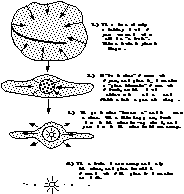This is a schematic showing the forming solar system.
Click on image for full size
C. Alexander
How the Solar System may have formed out of the Primordial Nebula
The solar system contracted, or shrank together, out of a spinning cloud of hydrogen and helium gas. This spinning cloud had a certain amount of momentum, which caused it to flatten, somewhat the way a ball of pizza dough can be made flat by spinning it in the air. As it flattened, the gaseous material was forced to begin condensing into solid form.
These little particles of solid material were soft and sticky, and further clumped together to form larger balls of solid material whenever they touched each other, somewhat the way "silly putty" does. Eventually only a few large clumps of this material remained in the forming solar system, and they became the core of "protoplanets".
For a diagram showing what kind of materials condensed where in the forming solar system, click here.
You might also be interested in:
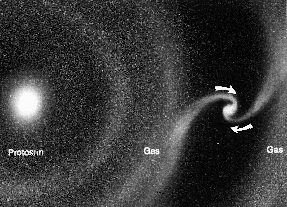
As shown in this picture, while they were forming in the solar nebula, the nucleii of the planets-to-be (called protoplanets) drew material to themselves from the cloud of gas and dust around them. The
...more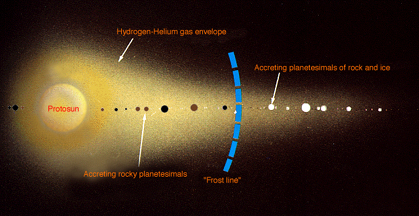
The position of the planets in the solar nebula greatly affected their 1. size and 2. composition. This is because of the effect of how cold it was in the nebula. 1. The nebula was a lot warmer close to
...more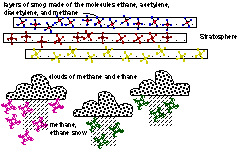
Besides methane, Uranus' atmosphere contains more sophisticated atmospheric molecules such as ethane gas, acetylene, and diacetylene. All these molecules form layers of haze at different altitudes high
...more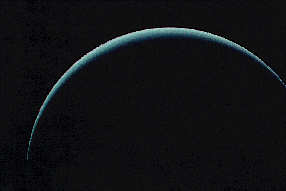
The mesosphere of Uranus is a region of balance between warming and cooling. That essentially means that nothing happens there. Except for diffusion, the atmosphere is still. Upper reaches of the atmosphere,
...more
As on Earth, the atmosphere of Uranus consists of a troposphere, stratosphere, mesosphere, and thermosphere. The troposphere is the region where the visible clouds are to be found. The stratosphere, as
...more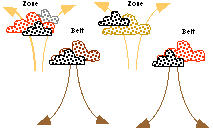
On Uranus, as on Jupiter, the winds in the belts and zones blow first in one direction, then in the opposite direction. Wind blows east in a belt, and west in a zone. The clouds rise up in a belt, and
...more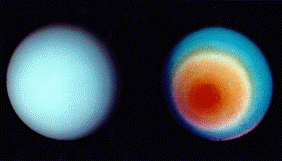
The striped cloud bands on Uranus, like Jupiter, are divided into belts and zones. On Uranus the belts and zones are hard to distinquish. The left picture shows the north pole of Uranus. In this picture
...more


